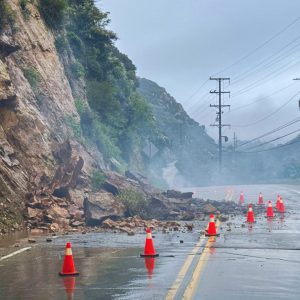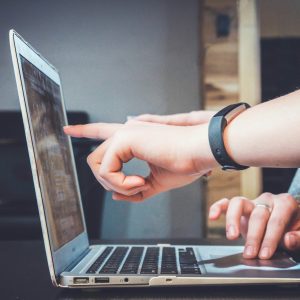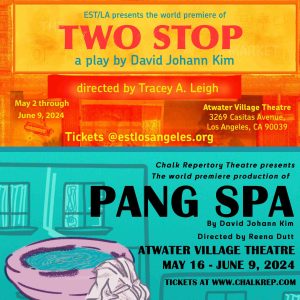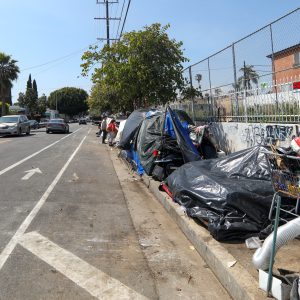 View Winners →
View Winners → LA City Council advances proposed redistricting map, first public hearing on Wednesday

Photo by Levi Meir Clancy on Unsplash
The Los Angeles City Council Tuesday advanced a draft map of proposed new borders for its 15 districts, ahead of the first of two state-required public hearings on the map Wednesday.
Over the last week, council members made significant changes to a draft map originally recommended by a civilian redistricting commission. City Council President Nury Martinez had blasted that original map, saying the commission’s drastic changes to council districts “confused and alienated thousands.”
On Nov. 2, council members introduced dozens of amendments to the commission’s draft map, followed by more changes introduced by the City Council Ad Hoc Redistricting Committee on Friday.
One of the most significant changes made by the committee was reversing the commission’s decision to move Exposition Park back into Council District 8 from Council District 9, where it has been for the last 10 years. During the redistricting process a decade ago, USC and Exposition Park were located in Council District 8, and this year’s civilian commission voted to leave USC in Council District 9 but move Exposition Park back to Council District 8.
After the Ad Hoc Redistricting Committee — which included Council District 9’s Councilman Curren Price — voted Friday to amend the draft map to leave both Exposition Park and USC in Price’s district, Council District 8’s Councilman Marqueece Harris-Dawson on Tuesday attempted to amend the draft map again to move Exposition Park into his district. That amendment failed by an 11- 3 vote, with only Councilwoman Nithya Raman and Councilman Mike Bonin siding with Harris-Dawson.
“The City Council has an opportunity to correct a redistricting error that has impacted the community for the last 10 years when Downtown LA and the majority of its assets were moved out of South Los Angeles to Council District 14, and the two largest assets in Council District 8 were transferred to Council District 9,” Harris-Dawson’s office said in a statement to City News Service.
Harris-Dawson’s office added that the council members’ action to move Exposition Park out of Council District 8 — where it was from the 1960s until 2012 — leaves “the only Black majority Council District in the city once again with fewer assets by far than any district in the entire city.”
Council District 9 residents have noted that their district is the poorest in the city, and needs the assets offered by USC and Exposition Park.
“Removing this vital economic resource from CD9 and redistricting it within a significantly higher income council district would fail to advance economic and social equity in the city and further exacerbate concentrated poverty,” said Albert Farias, chair of the Voices Neighborhood Council, in a call into Tuesday’s City Council meeting.
Harris-Dawson and Raman were the only two council members to vote against advancing the draft map Tuesday.
Raman, who served on the Ad Hoc Redistricting Committee, had also voted against advancing the map out of committee, noting that the draft map removes 42% of her constituents, significantly more than the rest of the districts, which mostly lost less than 10% of their constituents.
Raman successfully amended the map on Tuesday to restore part of Silver Lake to her district, but the map still removes a significant percentage of her constituents.
The amendments made over the last week to Raman’s Council District 4 represent some of the most drastic changes from the civilian commission’s recommended map, which left two districts undesignated, leaving it up to the council to decide which would be District 4 and which would be District 2. The commission’s recommendations would have left either Raman or Council District 2’s Councilman Paul Krekorian in an entirely new district, with none of their previous constituents.
The City Council also voted to change the divide in Reseda between Council District 3 and 4 to not be Reseda Boulevard, which is deemed a “high injury network.”
Councilman Bob Blumenfield, who represents Council District 3, said the change was made in response to caller concerns.
The council will hold a public hearing on the draft map, as required by the state, on Wednesday at noon.
The council must adopt the final borders for the 15 districts to go into effect on Jan. 1. Wednesday’s meeting is accessible at clerk.lacity.org/calendar, and submit public comment by dialing 669-254-5252 with Meeting ID No. 160 535 8466 and then pressing #.
Participants will then press # again when prompted for participant ID. They will then press *9 to request to speak.
A second meeting is tentatively scheduled for Nov. 23, and the council will vote on adopting a final map on Dec. 1.
The City Council’s changes to the map come amid calls from many — including the civilian Los Angeles City Council Redistricting Commission — to change the city’s policy in the future to have an entirely independent body handle the redistricting process.
In the commission’s recommendations submitted to the City Council, it called for an independent body to redraw the borders in 2031.
“This commission over the last year confirmed that the quasi- independent nature of the advisory commission simply does not work,” commission chairman Fred Ali told council members. “It’s time for an independent, rather than advisory, commission to assume responsibility for redistricting for the good of our city.”
The Redistricting Commission uses data from the U.S. Census to update the city’s districts, with each council member representing about 260,000 people.
Ali told council members on Nov. 2 that 15,000 people offered comment during the process, but he noted challenges during the process, including the COVID-19 pandemic, census data being delayed by five months and a “historic undercount of certain communities” within that data.
Martinez said the commission’s map reflected an undercount she attributed to the Trump administration’s failed attempt to add a citizenship question to the census and the former president’s confusing messaging on the census’ deadline.
“Los Angeles’ numbers are simply not accurate. Look around you, we did not get whiter and we did not get wealthier. This is not the Los Angeles that I see around me,” Martinez said.








































































































